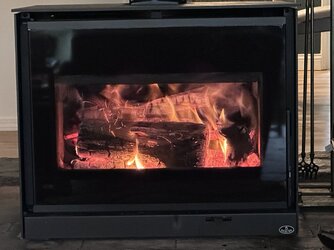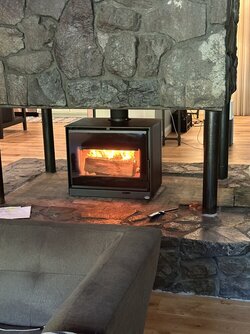I've been using my newly installed Osburn Inspire 2000 freestanding stove (with a new insulated SS liner) for a couple of months now, getting to know the stove and learning how to burn properly since I'm new to the game.
My stove works well and puts off decent heat, but I almost never see secondary combustion, even when using decent seasoned wood and filling the firebox up, with flue temps reaching about 600F and firebox temps reaching ~850F. Only a few times have I noticed secondary combustion taking place.
Is it normal for secondary combustion to be relatively rare, or does secondary combustion kick in in ways that are invisible.... or is there something I should be doing differently or troubleshooting?
Thanks for the help!

My stove works well and puts off decent heat, but I almost never see secondary combustion, even when using decent seasoned wood and filling the firebox up, with flue temps reaching about 600F and firebox temps reaching ~850F. Only a few times have I noticed secondary combustion taking place.
Is it normal for secondary combustion to be relatively rare, or does secondary combustion kick in in ways that are invisible.... or is there something I should be doing differently or troubleshooting?
Thanks for the help!



